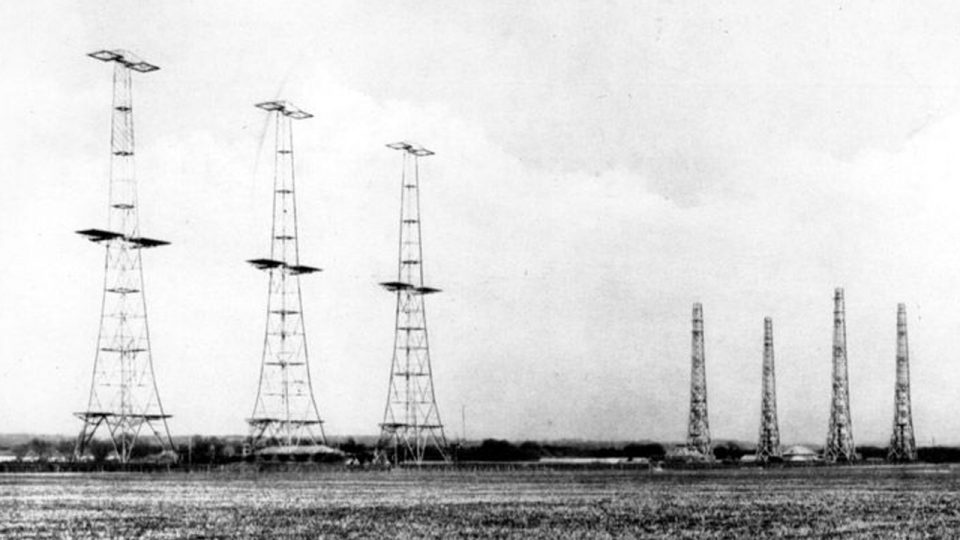
Operations Research, like so many other disciplines, thrived for such a non-constructive reason as war.
During the pre-war escalation of the 1930s, Germany aimed for air dominance in Europe and it increased the power and reach of its air force. Faced with this fact, Great Britain was at a disadvantage since the farthest islands off its coast were just 70 miles away, a mere 17 minutes flight for German bombers, which implied a very short reaction time in case of an attack.
Thus in 1934 the British government created a committee to advance scientific and technological solutions to strengthen defence methods against the ever more likely air strikes. In a display of creative thinking this committee considered the idea of developing some sort of ‘death ray’ that could remotely incapacitate enemy pilots or disable the bombers’ weapons. However, this posed another problem: it was necessary to identify where the target was in order to activate and point that ray.
In 1936 an experimental team in Suffolk delivered the first promising results as a result of the work to solve this problem and by 1938 England already had several radars along its coast. However their efficiency was insufficient due to the difficulty in integrating the information provided by all the different stations, which was often conflicting.
That very same year a group was created to investigate how to improve the early alert system, directing the research towards operations (as opposed to technical aspects). ‘Operations Research’ was the term that was coined for this new branch of applied science, which proved vital to the Battle of Britain during World War II.
In particular, the English teams were able to better determine the best location for radar antennas, to better exploit the information received from them and to devise control and defence strategies against German bombers, that is, how to deploy the fighter planes in the event of an attack so that defence was as effective as possible.
It was a first step that showed that by making a better use of the available information, a system could be optimally governed.
England was not alone in the development of this new area ofknowledge. In 1946, George Dantzig was a mathematical advisor to the US Air Force Comptroller in the Pentagon. Dantzig had just completed a PhD in Mathematics at the University of California in Berkeley and was looking for a position in academia. In order to keep him from leaving the Pentagon, he was offered a challenge: to automate the planning process generation (a time-staged deployment, training and logistical supply program). Inspired by Vasily Leontief, who was awarded the Nobel Prize in Economics in 1973, Dantzig formulated a problem in terms of Linear Programming as we know it today, which introduced the concept of objective function instead of ground rule. It was an elegant model but the problem was how to solve it. Given the lack of adequate techniques, Dantzig created the Simplex algorithm.
The term ‘Mathematical Programming‘ is born with Dantzig and it is taken from the military context, where a program is a set of schedules of training, logistical supply chain and deployment. The term ‘linear programming’ is prior to computers and it is not etymologically related to computer coding. The original name was Programming in a Linear Structure, later shortened to Linear Programming. Later, Mathematical Programming (1949) was adopted to avoid restrictive connotations.
The approach that this new perspective provided was used to analyse a variety of other problems during World War II. For example, given a set of objectives defined each by its value, level of vulnerability, physical properties and geographical distribution, together with the accuracy of the weapons required for each mission, Mathematical Programming was used to distribute the effort between the different objectives so that the outcome of the attack was maximized.
Since the end of the war, as with the knowledge generated by other disciplines, Operations Research found good use in a very wide array of civil applications: facility planning, transportation plans, development of vehicle routing, production and workforce planning.
In contrast to its military origin, Operations Research has also been put at the service of society to improve issues such as the optimal location of ambulances for shorter response times to incidents, operating room planning to offer the best attention to patients, optimization of blood sample collection routes or improvement of cytology tests analysis times in order to offer earlier diagnosis to patients and, ultimately, save more lives (1) .
(1) in the 90s Laporte proposed a heuristic solution to a partitioning problemfollowed by a travelling journeyman problem to perform quicker sample analysis.


